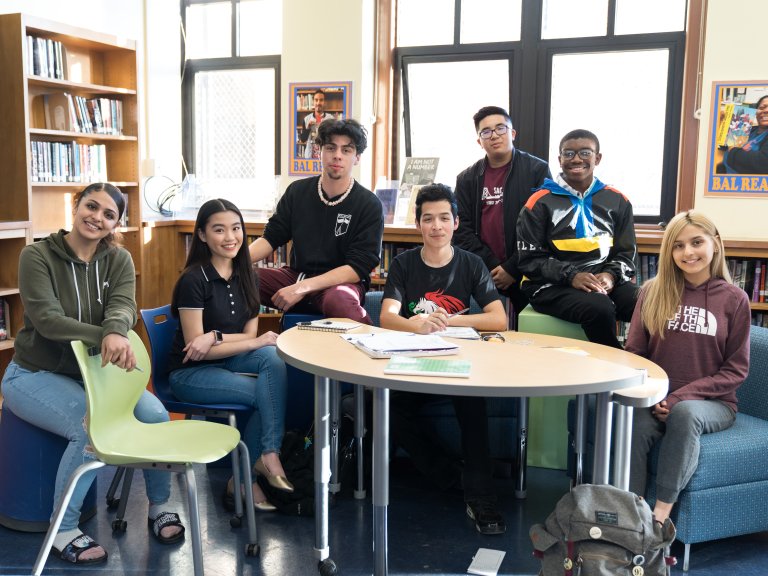Discover the Benefits of Advocacy: Save Temecula Schools
Discover the Benefits of Advocacy: Save Temecula Schools
Blog Article
The Effect of Institution Environments on Academic Success and Personal Health
The layout of educational areas, including natural illumination and ergonomic furnishings, can enhance trainees' concentration and comfort. How can colleges purposefully boost these facets to better support their students?
Physical Format and Layout
Just how does the physical design and design of a college influence academic success? The setup and visual of a college environment can substantially affect students' discovering end results. A well-designed college format promotes ease of movement, decreases disturbances, and fosters a sense of security and belonging. Vast passages and plainly marked areas facilitate smooth changes in between classes, reducing lateness and disruption. Furthermore, purposefully put common locations encourage social communications, which are vital for emotional and social advancement.
All-natural illumination and reliable air flow systems are crucial in improving cognitive feature and lowering absenteeism. Studies have shown that class with sufficient all-natural light improve trainee focus and decrease feelings of sleepiness. Additionally, ergonomic furniture customized to pupils' demands can stop physical discomfort, permitting for prolonged emphasis and interaction in scholastic tasks.
Accessibility to outside spaces and aesthetically pleasing environments likewise play a vital role - Save Temecula Schools. Green rooms and well-kept institution grounds give possibilities for exercise and mental relaxation, both of which are essential for maintaining high degrees of academic efficiency. Basically, a thoughtfully designed physical atmosphere can work as a catalyst for academic excellence, promoting an ambience that sustains both mentor and learning
Classroom Environment
A favorable classroom ambience is basic to accomplishing scholastic success. An atmosphere that fosters a feeling of safety, inclusivity, and shared regard urges trainees to engage more actively in their learning processes. The setting of a class, consisting of elements such as illumination, noise levels, and seating plans, can significantly impact trainee focus and motivation. A well-ventilated, well-lit classroom with minimal diversions can improve cognitive function and reduce stress and anxiety, consequently promoting far better academic end results.
Furthermore, the class ambience ought to support a society of partnership and open communication. When students feel comfortable expressing their concepts and asking concerns, they are most likely to engage deeply with the product and establish important believing skills - Save Temecula Schools. Peer interactions and team tasks can enhance knowing by cultivating and providing varied point of views team effort
Moreover, developing clear assumptions and constant routines can produce an organized setting that enables students to concentrate on their researches. By reducing uncertainty and providing a predictable structure, students can better manage their time and duties. Ultimately, a favorable class atmosphere not just enhances scholastic efficiency yet also contributes to the total well-being of pupils, preparing them for future educational and individual undertakings.
Teacher-Student Relationships
Structure on the importance of a positive class environment, the connections between students and educators play a critical duty in forming academic success. A healthy and balanced teacher-student connection cultivates a discovering environment where trainees feel valued, comprehended, and sustained, which dramatically boosts their inspiration and involvement. When students perceive their teachers as approachable and understanding, they are much more most likely to participate proactively in class and hop over to here look for assistance when required, contributing to a much deeper understanding of the subject issue.

Reliable interaction is essential to nurturing these connections. Teachers who utilize open, considerate, and consistent communication create a foundation of trust. This count on makes it possible for trainees to share their worries and ideas freely, cultivating a collective knowing environment. Essentially, solid teacher-student connections are a keystone of educational success, playing a vital function in both academic success and individual advancement.
Peer Interactions
Peer communications substantially influence scholastic success by shaping a student's social and cognitive growth. Positive peer communications can enhance a trainee's inspiration and interaction in scholastic activities through collaborative understanding and mutual support.

Efficient peer communications likewise add to the development of crucial life skills, such look at here now as dispute, cooperation, and interaction resolution. These social expertises are vital for both academic success and personal well-being, emphasizing the significance of promoting favorable peer characteristics within the college atmosphere.
Extracurricular Tasks
Involving in extracurricular activities plays a crucial function in a student's scholastic success and personal advancement. Study regularly suggests that students that get involved in extracurricular tasks often tend to accomplish greater academic efficiency.
Furthermore, extracurricular involvement cultivates a feeling of belonging and area, which is crucial for personal wellness. Taking part in team activities allows students to construct and enhance social media networks, improving their social and emotional intelligence. These communications are critical for developing interpersonal abilities that are useful in both scholastic and future professional environments.
Furthermore, after-school activities give a constructive electrical outlet for students to discover their passions and passions beyond the standard curriculum. This expedition can lead to the exploration of new skills and potential job paths, even more motivating pupils to engage even more deeply in their scholastic work. To conclude, the function of after-school activities extends past simple recreation; they are essential to cultivating a holistic educational experience that promotes both scholastic success and personal growth.
Final Thought
In amount, the influence of institution atmospheres on both academic success and personal health is profound. Thoughtfully designed physical formats and class, in addition to favorable teacher-student relationships and useful peer interactions, significantly enhance trainee inspiration and involvement. The existence of helpful instructors can alleviate tension, promoting a supporting ambience favorable to alternative growth. These aspects jointly underscore the importance of developing and preserving ideal institution environments for the advantage of trainees' scholastic and individual growth.
Ultimately, a favorable class ambience not only enhances scholastic performance yet likewise adds to the general wellness of students, preparing them for future educational and personal endeavors.

Report this page